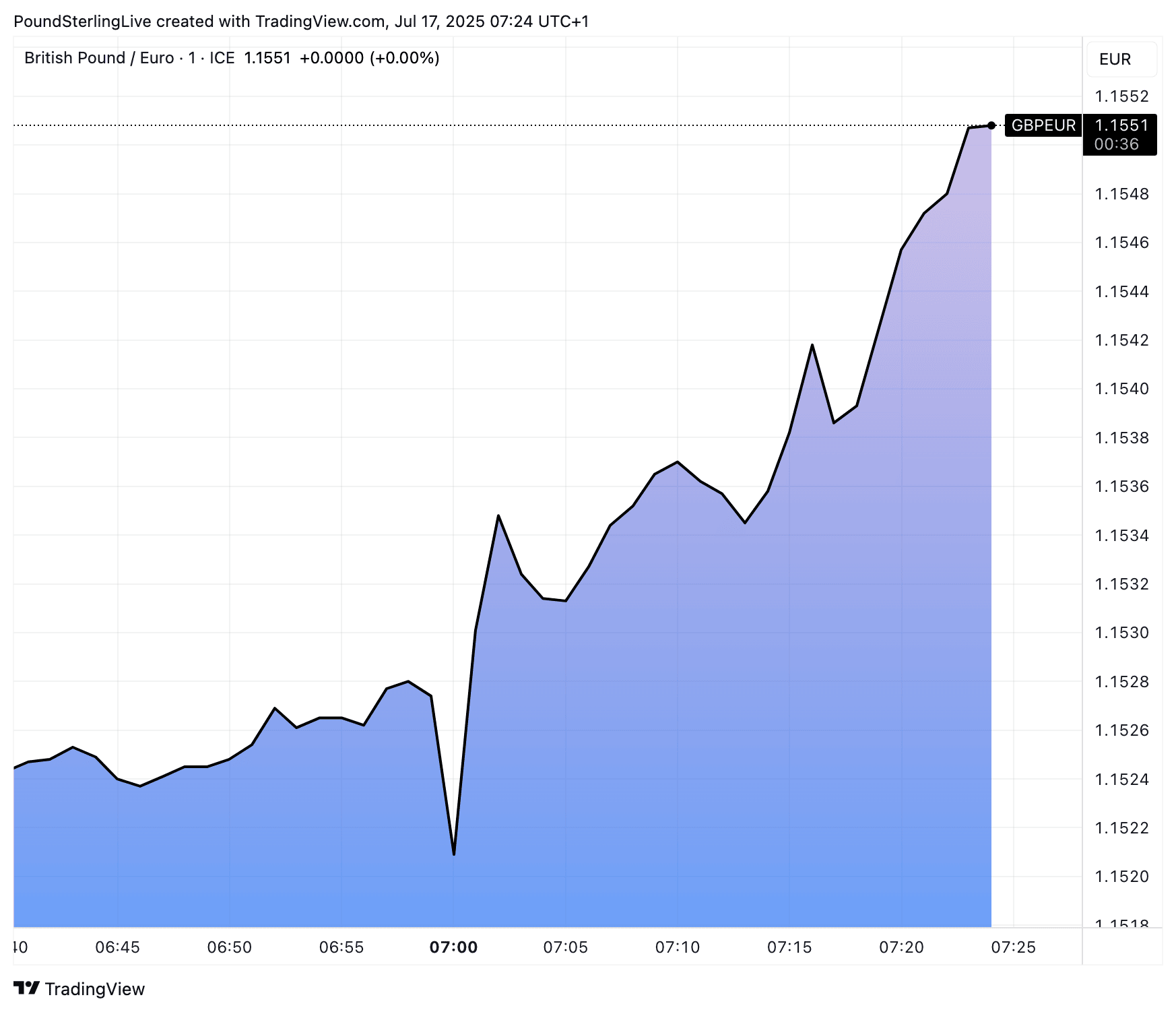
Image © Adobe Images
The UK shed jobs in June, but wages stayed firm.
The ONS said unemployment rose again in June, however, a strong wages print helped Pound Sterling gain against the Euro, Dollar and other major currencies: The Pound to Euro conversion edged higher to 1.1536, the Pound to Dollar pair lifted to 1.3402.
Assisting the recovery in Pound Sterling was news that wages rose 5.0% in May, which was slightly higher than the 4.9% the market looked for.
Strong wage dynamics will ensure inflationary pressures in the economy remain firm, preventing the Bank of England from quickening the pace at which it cuts interest rates.
"Today’s data is unlikely to see the BoE pursue a faster pace of easing, with a dovish turn still prohibited by stubborn price pressures, particularly after the hotter than expected June CPI released yesterday. Consequently, the Bank’s ‘gradual and careful’ guidance looks set to stay in place for now, likely leading to just two 25bp cuts being delivered over the remainder of the year," says Michael Brown, Senior Research Strategist at Pepperstone.
With foreign exchange markets watching international interest rate differentials closely, this can offer the under-pressure UK currency some near-term respite.
Above: GBP/EUR at one-minute intervals, showing an initial spike following the ONS labour market report.
Although wages are firm and consistent with persistent inflation, Britain's unemployment rate rose to 4.7% in the three months to May, its highest level since September 2021, underlining continued weakness in the labour market despite robust wage growth.
The rise came after the ONS said 41K jobs were shed in June, meaning that payrolled employment has now declined for 8 months in a row.
Also pointing to an ongoing deterioration in the labour market was news that the number of job vacancies fell for a 14th consecutive quarter, down 7,000 to 904,000 in the three months to June, though the pace of decline has slowed.
Although the British Pound has found some support from Thursday's data, we think it will take a great deal more positive evidence than a firm wage print to convince markets the Pound's fundamentals are improving.
Last week's GDP figures showed a consecutive monthly decline, while Wednesday's inflation report showed price rises are accelerating, which all points to an economy entering a period of stagflation.
Stagflation is where an economy shrinks or stagnates while inflation rises, a sour combination for investors and the Pound.
Given this, expect strength to remain short-lived and sold into.
"Sterling might get some temporary reprieve after approaching the EUR/GBP 0.87 handle a second time yesterday. We err on the side of offloading any GBP exposure in case of short-term GBP-rally’s," says a post-release reaction from analysts at KBC Bank.
The Pound will also be constrained by signs that the labour market is unlikely to improve in the coming months. The Institute of Directors says its research shows that more business leaders plan to reduce their employee headcount over the next year than increase it.
"This continued slump in the demand for labour is the predictable result of a series of policy blows to the case for hiring staff. The cumulative impact of the increase in Employer National Insurance Contributions, the Employment Rights Bill, and above-inflation increases to the National Living Wage has been to significantly increase the costs and risks associated with employing staff," says Alex Hall-Chen, Principal Policy Advisor for Employment at the Institute of Directors.

